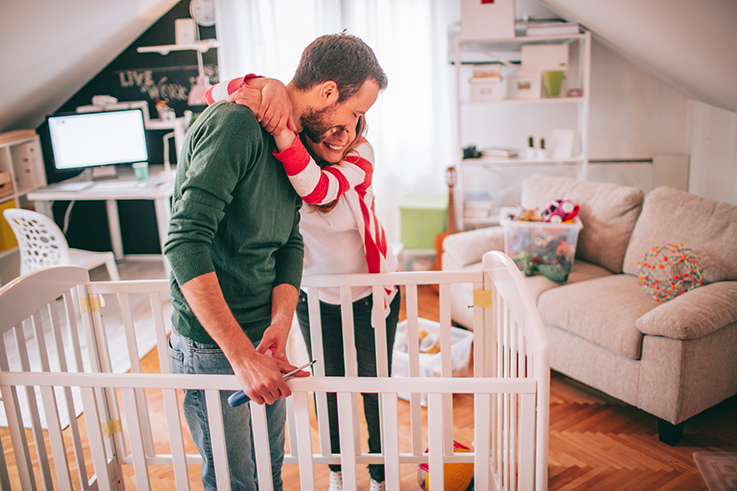One of the most exciting times in life is when you bring your baby home from the hospital to start their new life with you.
The first few months can be nerve-wracking as you try to figure out what needs to be done and how best to do it. The following checklist will help make sure that everything is set up safely for your little one!
Getting your baby’s room ready can be one of the most enjoyable parts of preparing for your tiny new addition. Whether you’re pumped to choose a theme and pick out felt animal heads, or you’re keen on a less-is-more approach, above all, you’ll want to make sure that your baby’s space is safe.
When should you baby-proof?
“You can’t get prepared too early,” says founder of CPR Kids and pediatric nurse, Sarah Hunstead. “Before you bring your baby home, you need to think about the space they’ll occupy.” And once your baby is on the move, it’s important to check that the whole room is safe for your brand-new explorer.
How to set up a safe nursery for your baby
There are common safety traps in nurseries that can be easily overlooked, but with a bit of planning, you can make the nursery a safe place for your baby to sleep, play and grow.
1. Make sure the cot is safe
Check that that the cot you choose meets Australian safety standards. Ensure that the locking devices are safe and the cot has no horizontal bars. The gap between the vertical bars should be between 50-95mm and no wider, to prevent little heads from getting stuck.
2. Mattress size matters
The mattress should be firm and flat. Whether you place your baby in a bassinet or a cot, make sure the mattress fits it well. It should not be too big, or too small, but just right.

3. Bedding – less is more
Keep the sleep space clear. Avoid using bumpers, pillows, soft toys, or bulky bedding as these can be a suffocation risk.
4. Change tables should have roll-off protection
Get yourself a change station that’s sturdy. Make sure the change mat is secured in place and has raised sides for roll-off protection. Consider using a mat with a safety belt – a great example is the Childcare Universal Change Pad – and remember to keep bottles and supplies out of the baby’s reach.
5. Keep cots away from windows
Hanging cords from curtains and blinds can get tangled and are hazardous to infants and small children. Position the cot away from windows, blinds, and curtains, as well as away from any electrical appliances.
6. Secure furniture
Make sure all furniture is stable. Secure large items like books and toy shelves using safety straps to fix the nursery furniture to the wall and prevent items accidentally being pulled over by a cruising baby.
7. Look at the lower walls and floor
Once your baby is on the move, it’s a good idea to get down to their level and consider your child’s view of the world. Place outlet covers overall power points.
8. Make drawers and doors safe for baby
Keep little fingers safe from hazards by using multipurpose latches that will prevent them from opening drawers and doors.
9. Install a baby gate
Using a baby gate between the nursery door and the rest of the home will allow your child to play freely in their room.
Setting up a safe haven for your baby means there’s just one less thing to worry about when the big day comes and you finally bring them home. Sarah’s last piece of sensible advice is, “The one takeaway I have for parents and carers is that we can’t wrap our kids in cotton wool. We need to reduce the hazards in our homes so they can go about and freely explore their world.”
Conclusion:
The one takeaway I have for parents and careers is that we can’t wrap our kids in cotton wool. We need to reduce the hazards in our homes so they can go about and freely explore their world.






